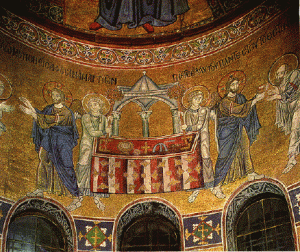Byzantium on the Volga
Jack asks how close early Russian culture was to Byzantine culture.
The Rus had contact with Constantinople at least as early as the 830’s, but the close ties began with the Rus adoption of Christianity in 989. As always with Byzantine policy, Christianity was the main vehicle for the transmission of culture. The first cathedrals in Russia were built by imported Byzantine architects and they were decorated by imperial artisans. St. Sophia of Kiev, the premier Rus architectural achievement of the 11th century, was modeled on the Hagia Sophia and its metropolitan was subordinated to the Patriarch of Constantinople. By the 1040’s a Byzantine traveler to Kiev would have found it at least visually familiar.
But Russian culture was never a simple copy of Byzantium. It took centuries for Christianity to spread across the vast Rus lands and only a select part of Byzantium was absorbed. For instance, although the Bible was rendered into Old Church Slavonic there is no evidence that any of the Greek treatises on philosophy, mathematics, or science were translated. In other words, the Rus were only interested in some aspects of imperial culture- mostly the magnificent pageantry. The divine liturgy was imported along with the dress and trappings of the court, but the literature was passed up. By the end of the 11th century Constantinople’s pull was beginning to wane and then in 1236 with the invasion of the Golden Horde Russia was wrenched firmly into the Mongolian orbit.
